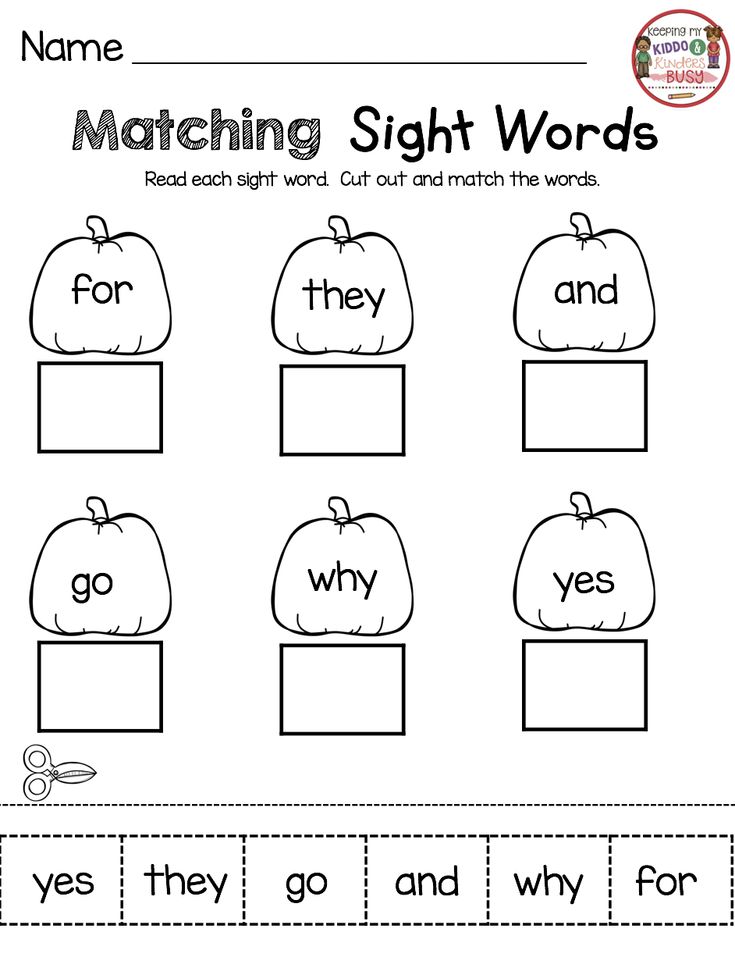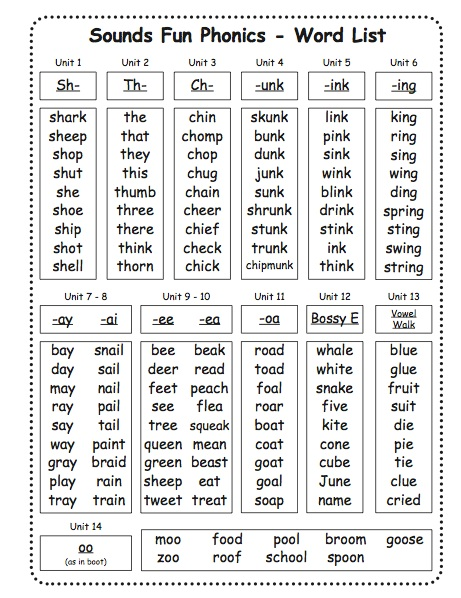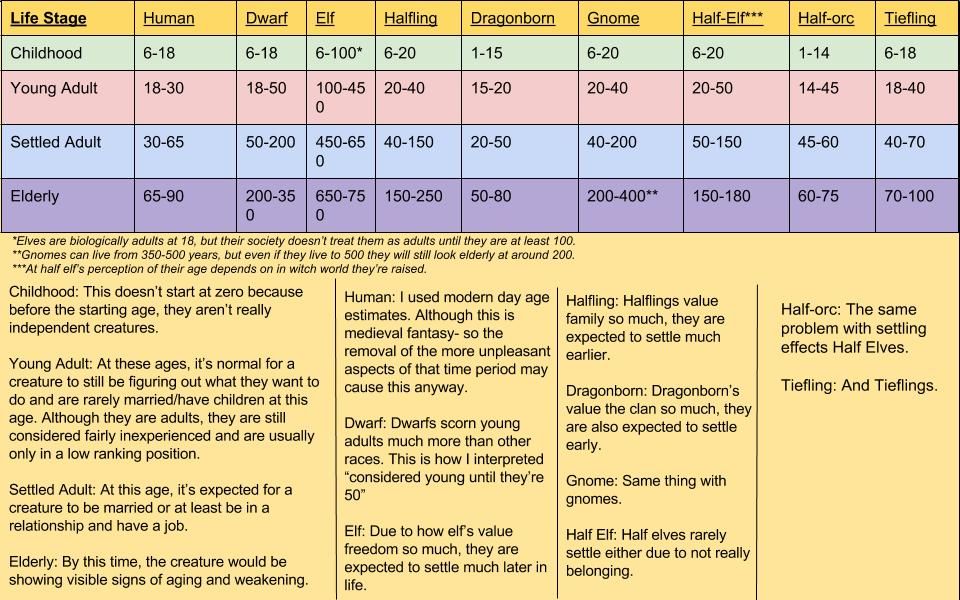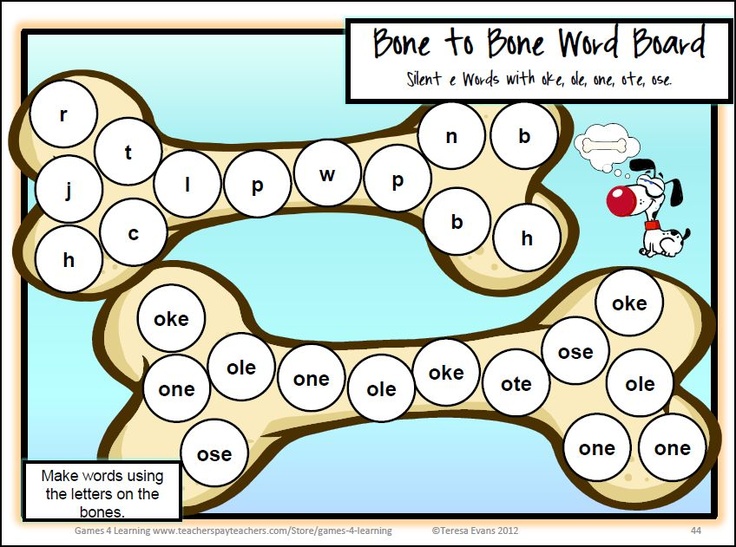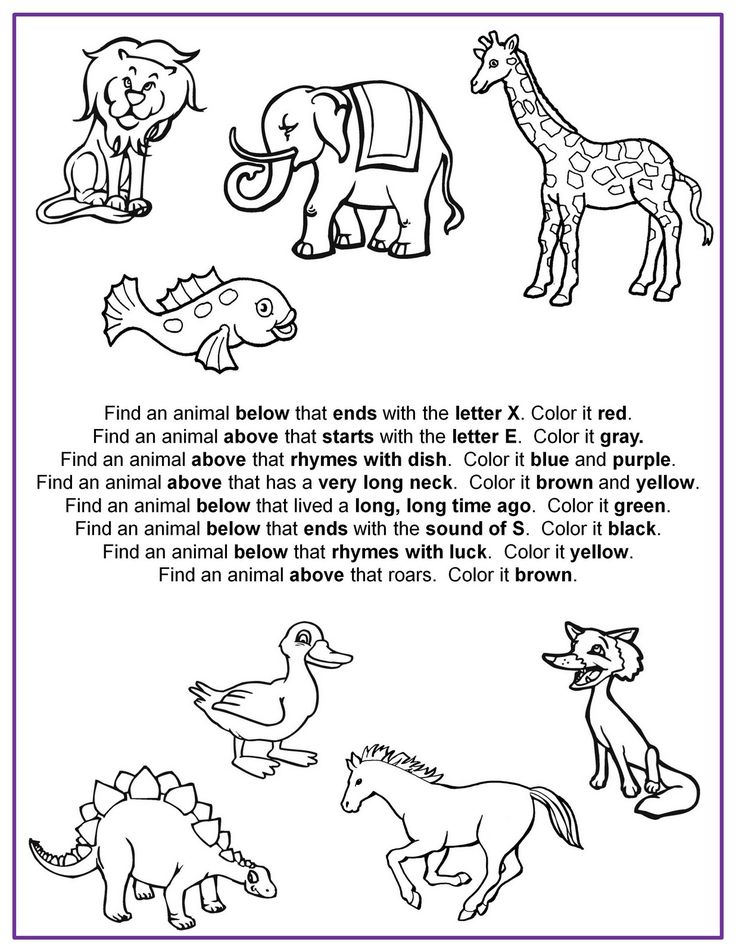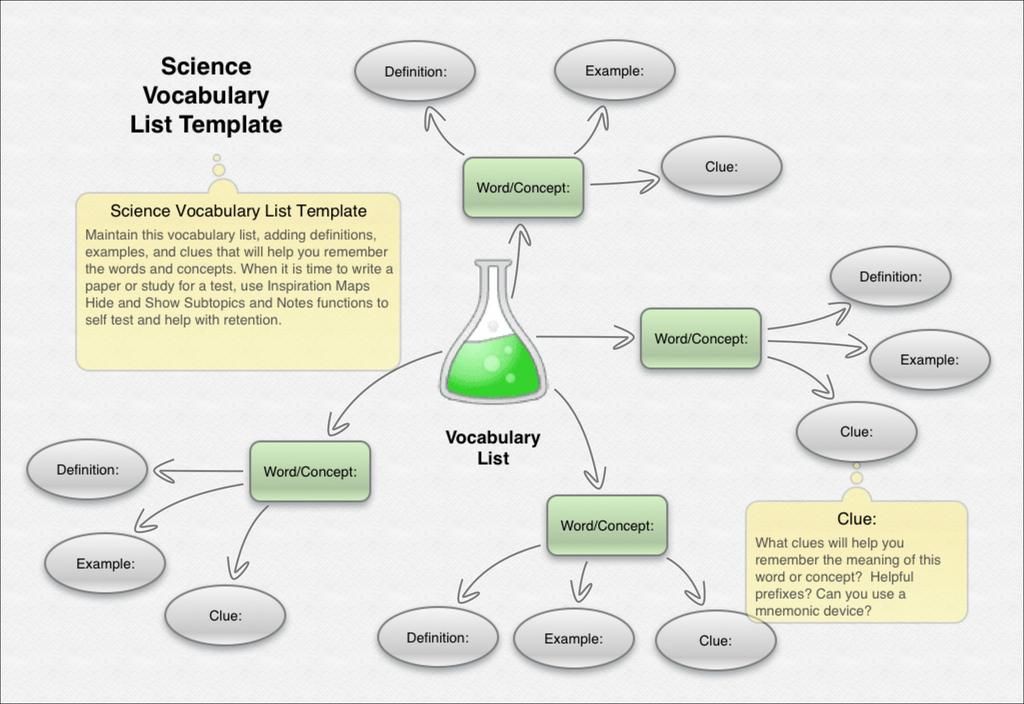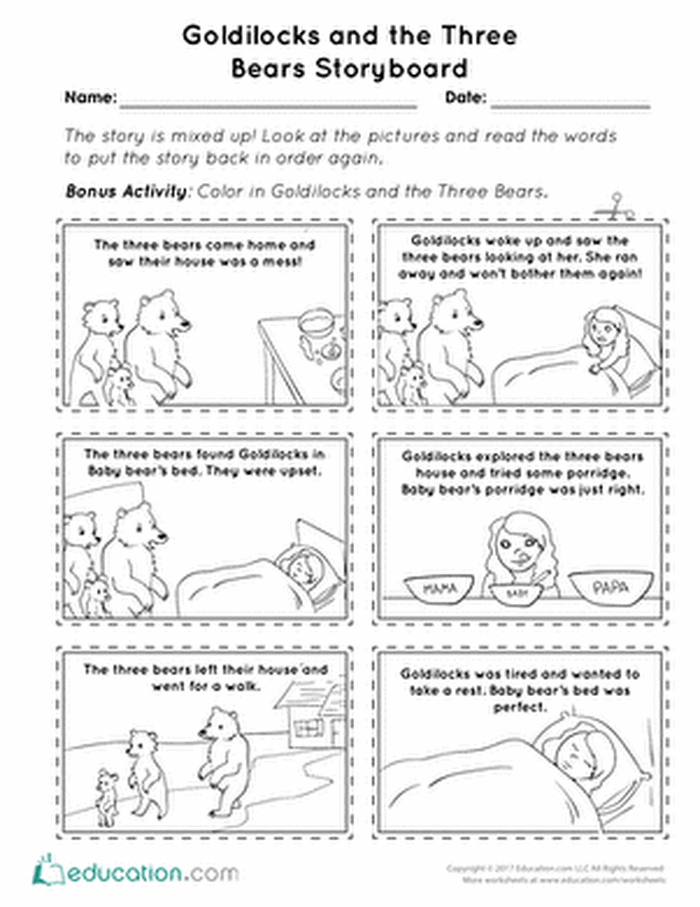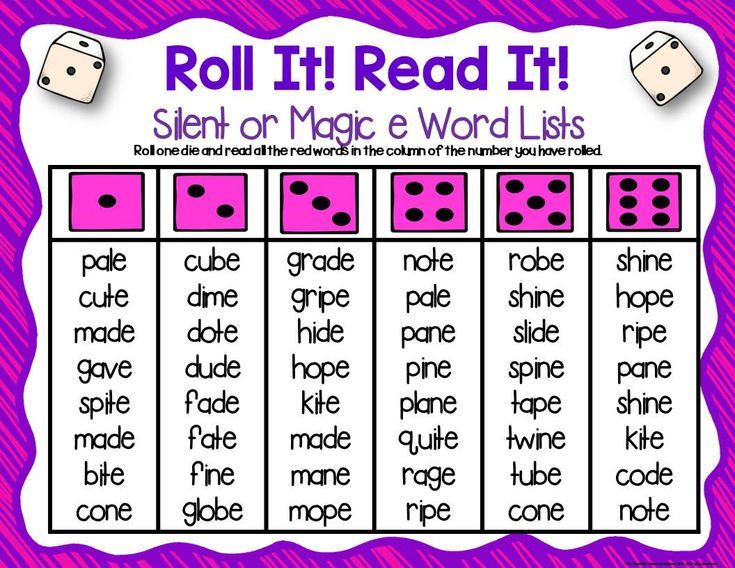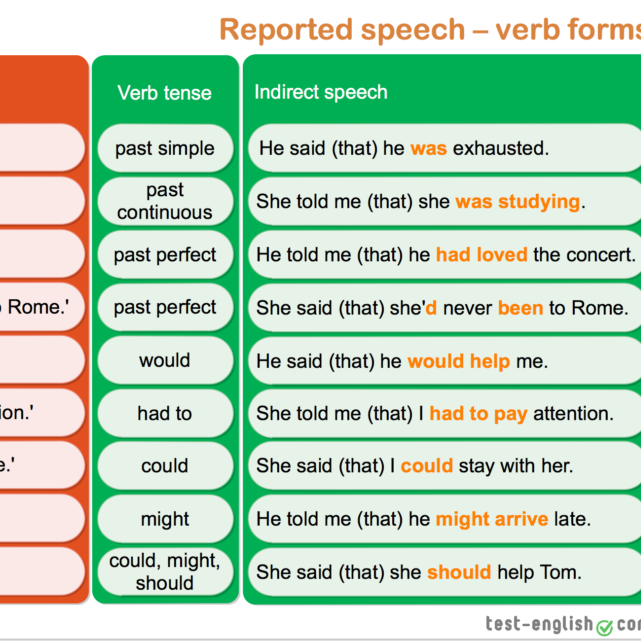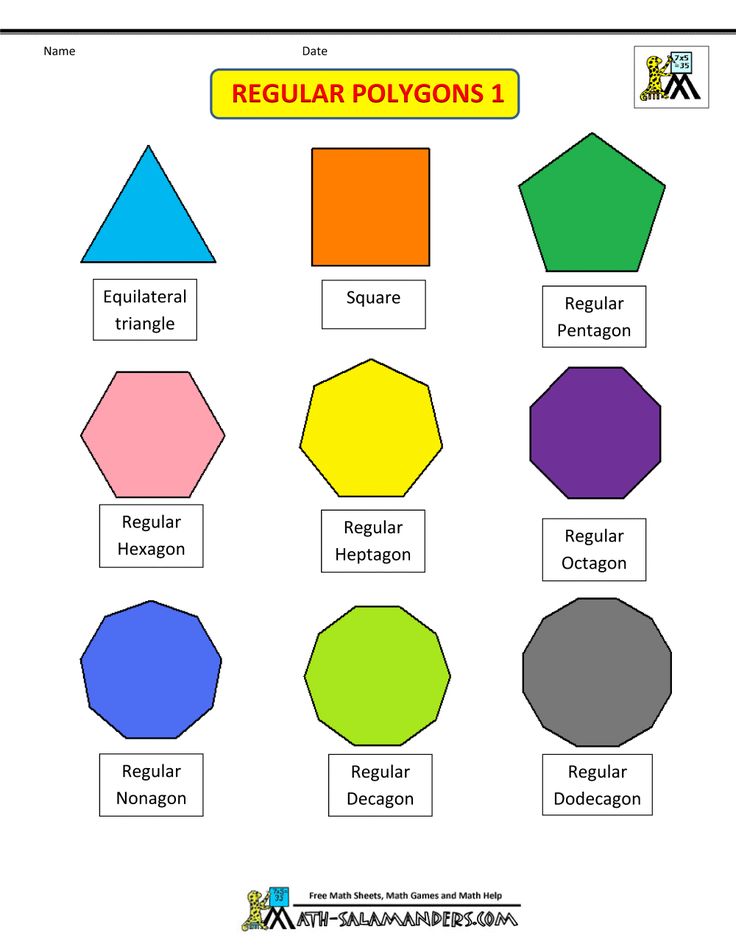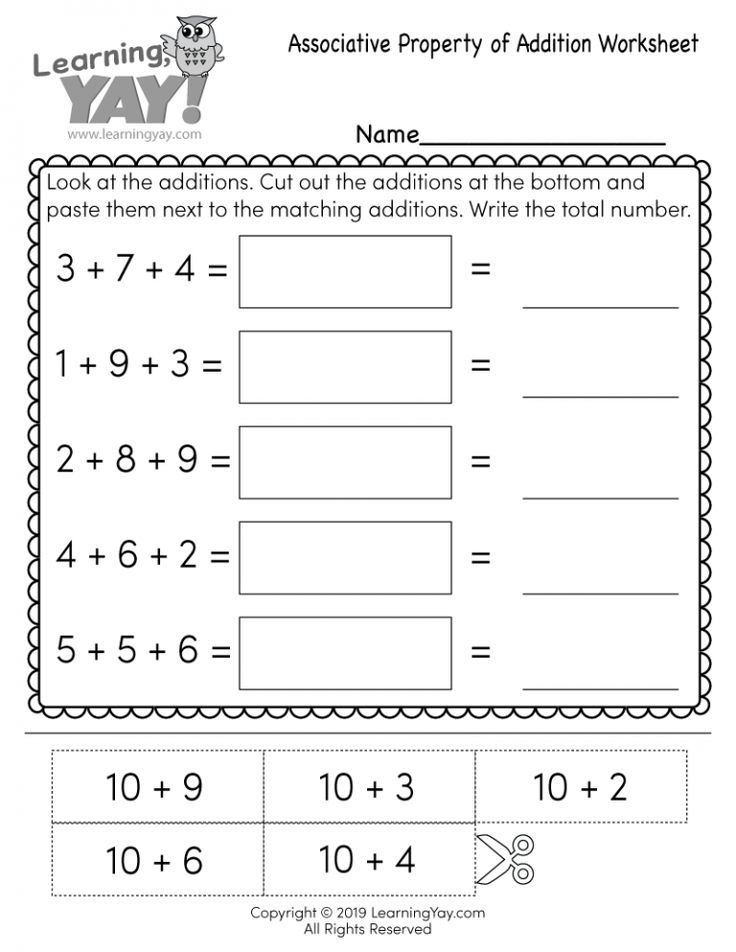Basic sight words for kindergarten
Kindergarten Sight Words to Know (With Free Printable)
DESCRIPTION
kindergarten sight words examples
SOURCE
Colorfuel Studio / iStock / Getty Images Plus
PERMISSION
Used under Getty Images license
If you're working with kindergarteners, a lot of your time will be spent helping them build language and reading skills. Sight words will be a primary focus of many of your lessons and activities. Use the helpful list of kindergarten sight words, along with related teaching tips, to help your students establish the strong language arts foundation they need to succeed in elementary school and beyond.
Dolch List: Basic Sight Words for Kindergarten
The Dolch sight words list is commonly used in elementary school classes. The full list contains more than 200 words, but not all of the terms are designed for use with kindergarten students. There are just over 50 (52 to be exact) kindergarten-specific sight words on the list.
Those are the terms you should focus on when teaching basic sight words to kindergarteners.
Printable List of Kindergarten Sight Words
The printable list of the Dolch kindergarten sight words is colorful and visually appealing, so it works well as a handout to share with students. Young children are sure to enjoy reviewing and studying the list!
52 kindergarten sight words
Click to View & DownloadKindergarten Sight Words A-G
You may want to break the word list down into relatively small alphabetical groupings, starting with the ones that begin with letters "a" through "g."
- all
- am
- are
- at
- ate
- be
- black
- brown
- but
- came
- did
- do
- eat
- four
- get
- good
Kindergarten Sight Words H-P
If you're proceeding alphabetically, move next to the words that start with "h" through "p.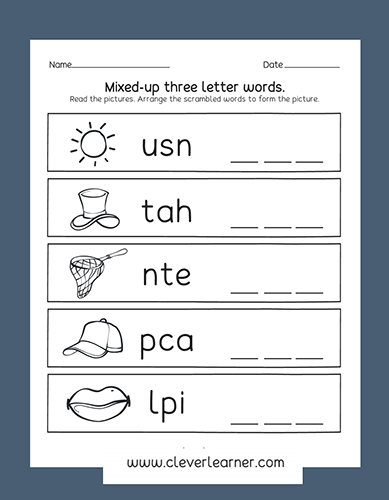 "
"
- have
- he
- into
- like
- must
- new
- no
- now
- on
- our
- out
- please
- pretty
Kindergarten Sight Words R-U
The next logical division is the words that begin with "r" through "u."
- ran
- ride
- saw
- say
- she
- so
- soon
- that
- there
- they
- this
- too
- under
Kindergarten Sight Words W-Y
Finally, move to words that start with "w" through "y." Please note that the Dolch kindergarten sight words list doesn't include any terms that begin with the letter "z."
- want
- was
- well
- went
- what
- white
- who
- will
- with
- yes
Activities to Teach Kindergartners Sight Words
There are many ways to teach sight words to kindergarten students Whatever strategies you use, focus on helping students learn how to recognize and properly use sight words.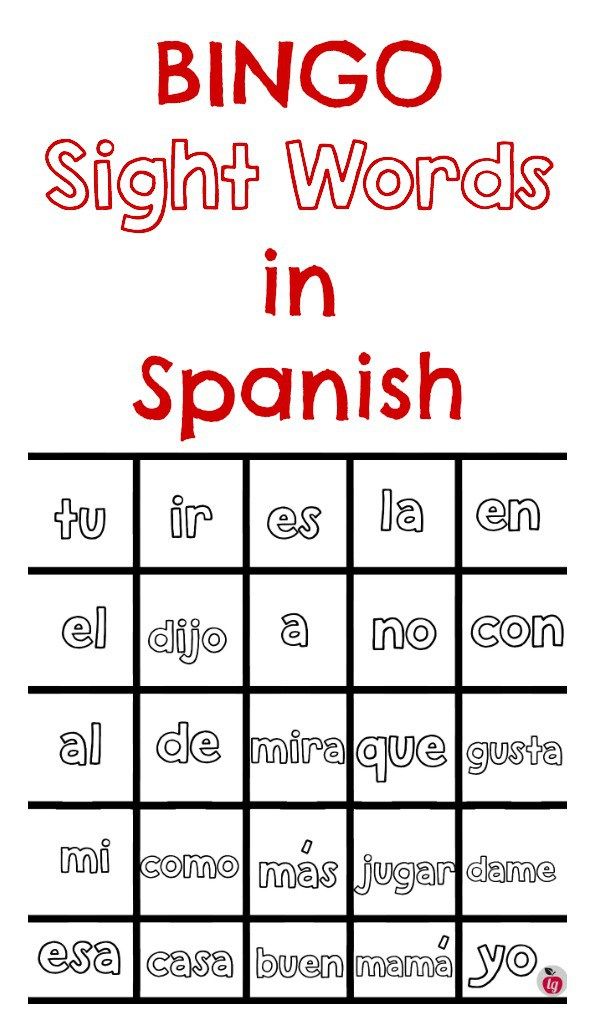
- Start with these lessons to learn kindergarten sight words, which focus on using flashcards, creating an animated movie and writing a song.
- Include some fun sight word games into your class, such as creating patterns with sight words or scavenger hunts to find hidden sight word flashcards.
- Challenge students to listen closely for sight words during storytime, and award prizes to the first student who raises a hand when a sight word is spoken.
- Assign students to come up with original sentences using certain sight words. Start with just one sight word per sentence, then make it more challenging by requiring two or three.
- Spur creativity by assigning students to work visual representations of one or more sight words into a drawing or other art project.
- Have students create a greeting card for a parent or other caregiver that features one or more sight words in the design or text.
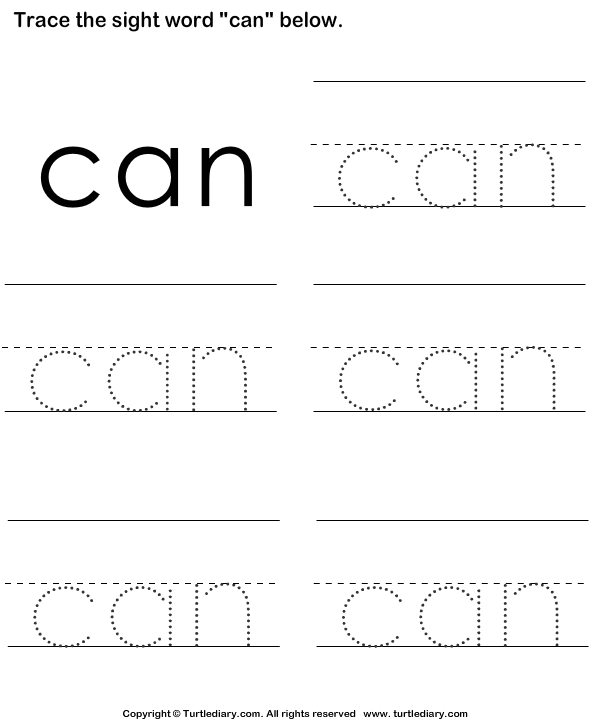
- Challenge students to describe designated objects using only sight words. This can be a group, partner or individual activity.
- Read off a selection of phrases or sentences with sight words and ask students to ring a bell or hold up a card any time you speak one of their sight words.
- Host a sight word spelling bee, offering prizes to all students who make it through the round without misspelling any terms from the kindergarten sight word list.
- Engage in a round-robin storytelling game, with each student coming up with a sentence using a sight word. Go around the room in order so that the sentences form a story. Whether the story makes sense or not, it'll be fun and students will get to practice using their sight words.
Tips for Developing a Sight Words Lesson Plan
For teaching kindergartners basic sight words, you should consider putting together a lesson plan focused on sight words appropriate for their grade level. Be sure to remember to add the fun into the lesson plans along with structured lessons.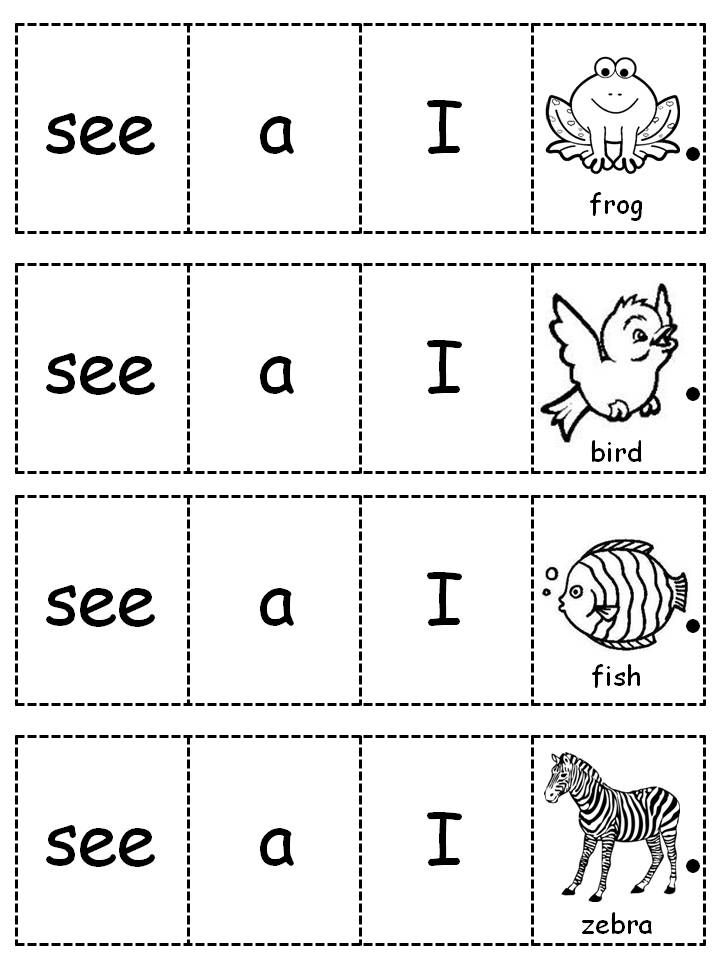
- Take a close look at the resources you have around you in the classroom. Come up with a few objectives and goals which you would like your kindergartners to accomplish.
- The next part of your lesson should specify how you intend to teach the reading and spelling of the sight words. Use some of the activity ideas listed above, as well as any other sight word games or teaching methods appropriate for the subject matter.
Before you know it you will have a rock-solid plan on how to teach your students about their basic sight words.
Building Langage Skills in Kindergarten
FREE Printable List of Kindergarten Sight Words & How to Teach Them
If you’ve got a child in kindergarten, you’ll want to get familiar with kindergarten sight words and learn how to teach your child to read & learn sight words.
As a child play therapist and teacher, I understand how important it is to understand what sight words are, as well as understanding which activities, games, and apps are best to use to teach them.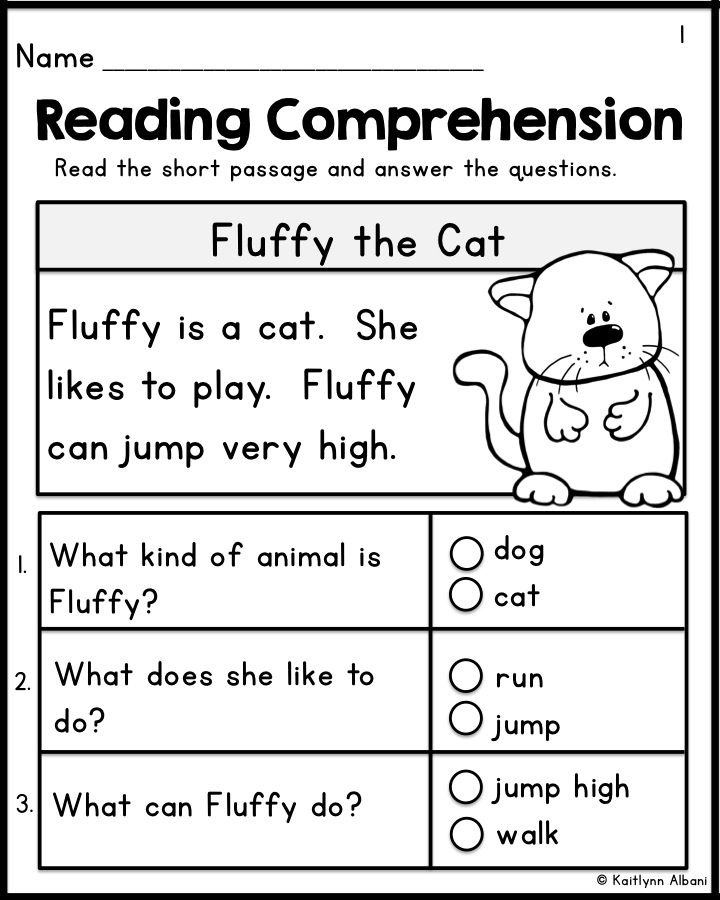
This post has been updated to include more Kindergarten Sight Word Resources for parents and teachers (like this Kindergarten Sight Word Bundle Packet).
Sight words are words that kindergarteners will see the most. Sight words are a commonly used term that usually refers to a set of words that reappears on almost any page of text.
Kindergarten Sight Words and How to Teach ThemThese high-frequency words are seen often. In fact, between 50-75% of your child’s text will include sight words from pre-primer & primer Dolch word lists.
What are sight words?
To become a great reader, children must master their sight words. It is essential to learn their sight words and to continue to practice them. Once your child has mastered them, it is time to move onto the next list.
Kindergarten sight word listWhen your child is looking at these words on a daily basis, they will learn them quickly. Repetition is the key to fluency (reading smoothly, without a lot of pauses), so practicing these words over and over will help to achieve that goal.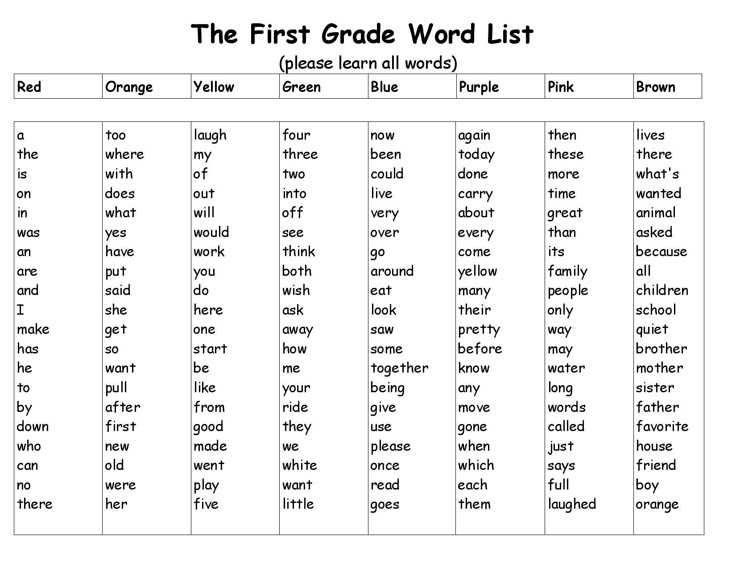 Here is a FREE printable list of Kindergarten Sight Words (click here, and I will send you the list)
Here is a FREE printable list of Kindergarten Sight Words (click here, and I will send you the list)
Or if you really want the complete package, get this Kindergarten Sight Word Bundle Packet. As a child play therapist, I put this packet together so you can help your child learn sight words. You can print it over and over again to help your child learn his or her sight words.
How many sight words are there?There are 52 sight words that are typically taught in kindergarten.
The Kindergarten Sight Words are:
all, am, are, at, ate, be, black, brown, but, came, did, do, eat, four, get, good, have, he, into, like, must, new, no, now, on, our, out, please, pretty, ran, ride, saw, say, she, so, soon, that, there, they, this, too, under, want, was, well, went, what, white, who, will, with, yes.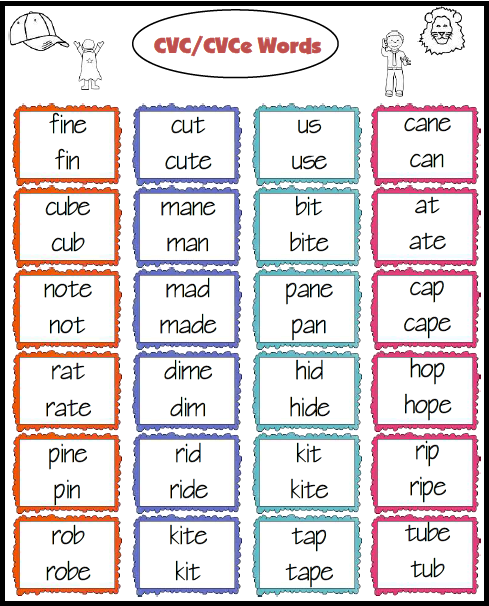
These are the 52 most commonly seen words in kindergarten level books. When a child is able to master those words, it not only makes it easier for them to read the words, it also improves their fluency or how quickly and smoothly they can read a passage.
To begin, simply introduce your child to the list (show your child, hang it up, read them).
Read all of the words to your child (every day) and explain that he will be learning a new word every day (or every other day). Be excited about it.
On day one, see if your child knows any of the words. If they do, put a sticker, a checkmark, or a smiley face to the left of the word (there is space for that). If not, that’s OK! He will.
Every single day, go over the new word, as well as the OLD words that they know. I start by going over the old words with the sticker and then picking a new word. I say it, spell it, say it again, and ask my child to repeat it.
During the day, we will talk about that word and go back to the wall where it is hanging to look at it. I do this at least three times. I keep my chart in the pantry, so anytime our kids eat a snack or want to grab something, they see the words.
Continue to add a sticker, checkmark, or a smiley face to their new words, until the whole list has been completed. From then on, you can just review them every day or every few days.
As the days go on, find these words in other areas (words in books, service words on signs, flash cards before bed…)
Related: YOU ARE WELCOME TO DOWNLOAD THIS SIGHT WORD CHECKLIST ↓ (free) by clicking here.
SIGHT WORDS TO TRACE
Tracing kindergarten sight words gives children a chance to engage with the words in a new and different way. By combining multiple learning styles in one lesson, kids are more likely to learn and recall their sight words. Here are a couple of methods for creating kindergarten sight words to trace.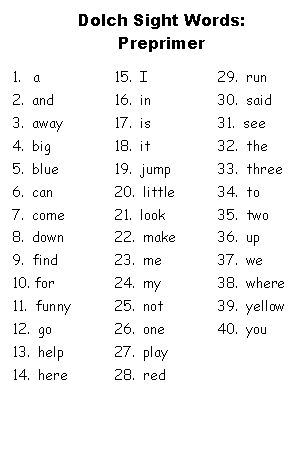
- Rainbow Writing: At the beginning of the school year, have students trace the sight words in three different colors. This repetition helps them develop motor memory while also solidifying the spelling of the word. As the school year progresses, have students write the words independently in three colors. They can overlap the colors or write them three separate times.
- Dry Erase Words: Kids love writing with different writing tools, so dry erase markers always make things more fun!
– Print out the kindergarten sight words you’d like students to practice on a sheet of heavy cardstock.
– Slip the cardstock into a transparent page protector and clip it to a clipboard.
– Then, with a dry erase marker, students can trace the sight words on the page protector.
If they make a mistake, it can be erased with a tissue or an old sock!
Technology has made even the youngest students digitally savvy. If you have access to a computer or tablet and a printer, have your students type their kindergarten sight words and print them out.
If you have access to a computer or tablet and a printer, have your students type their kindergarten sight words and print them out.
Kids love working in word processing programs and learning how to type. They can print the words in different colors, fonts, and sizes. Use the sight words they printed to decorate the room or as part of their reading folder.
If you minimize the page size, you could even use their printed words as Kindergarten sight word flashcards!
SIGHT WORDS IN SENTENCES
Learning sight words are important, but kids need to learn how to identify those words in sentences.
For early readers, being able to pick out kindergarten sight words in sentences means they have a complete understanding of the word.
Not only can they trace and write the word, but they can pick it out amidst other words. This is an important skill as they continue to develop their reading abilities.
How do you find them?One way to help kids identify their sight words in sentences is to play a modified version of I Spy.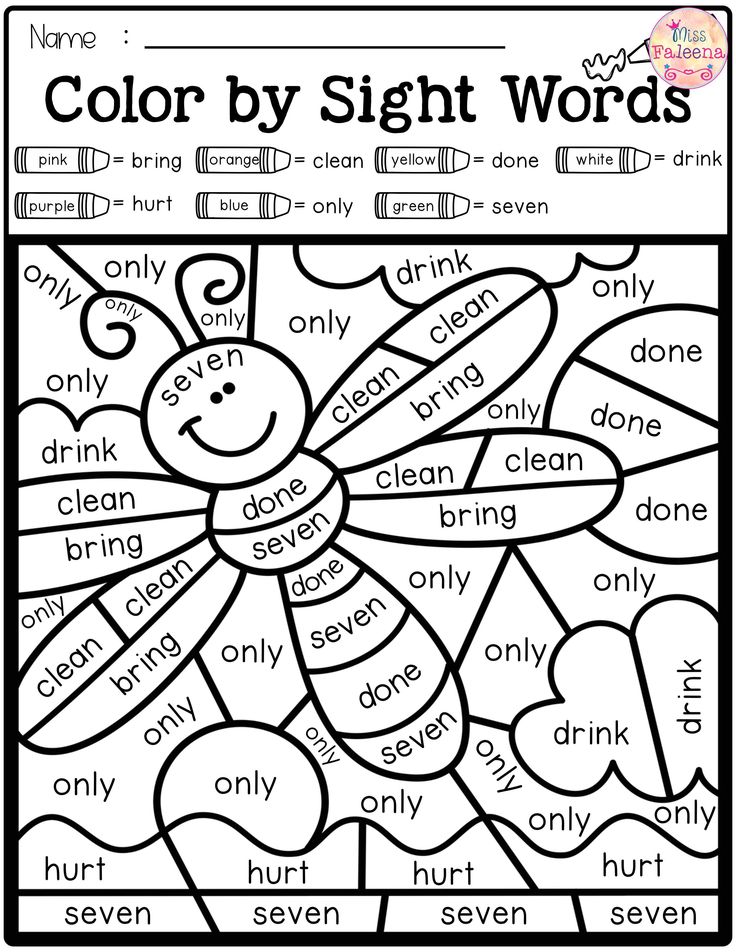 Instead of looking for objects, they are tasked with finding sight words. Give them a highlighter or highlighter tape to cover the word once they have found it.
Instead of looking for objects, they are tasked with finding sight words. Give them a highlighter or highlighter tape to cover the word once they have found it.
Since kindergarteners have a limited reading vocabulary, make the sentences as uncomplicated as possible. Even three-word sentences allow students to practice finding and identifying sight words. If you want to make it more challenging, add a couple of sight words in each sentence!
KINDERGARTEN SIGHT WORDS WITH PICTURESKindergarten sight words are basic words that are seen the most frequently in grade-level books. Many of the words are hard to illustrate because of their simplicity. One way to create flashcards of kindergarten sight words with pictures is to have students decorate them or create an illustration that helps them remember the word.
For example, they may draw someone crawling under a table, or they might draw a picture of a toy that has fallen under a bed to illustrate the word “UNDER.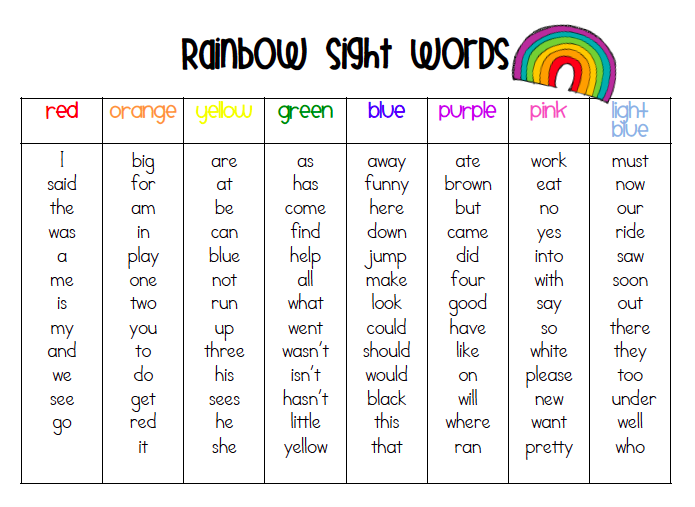 ”
”
Whatever image helps them remember the word is fine to use. The goal is to help them learn the words so there is no right or wrong.
KINDERGARTEN SIGHT WORD FLASHCARDSKindergarten sight word flashcards are especially helpful for quick practice. They can be useful for reviewing words at home or on the go.
Some people even uploaded them as virtual flashcards to a tablet or smartphone to be practiced while in the car, visiting relatives, or on vacation.
It doesn’t matter if you print them out to review alone, study them from a device, or turn them into a game; sight word flashcards are a great way to reinforce kindergarten vocabulary.
When using Kindergarten Sight Word Flashcards, start with three sight words. When your child knows these three words, add one additional word at a time to the existing words the child already knows.
If you add more, your child will likely become frustrated – and we want this to be fun! Continue adding one word at a time until your child can recognize all Kindergarten sight words.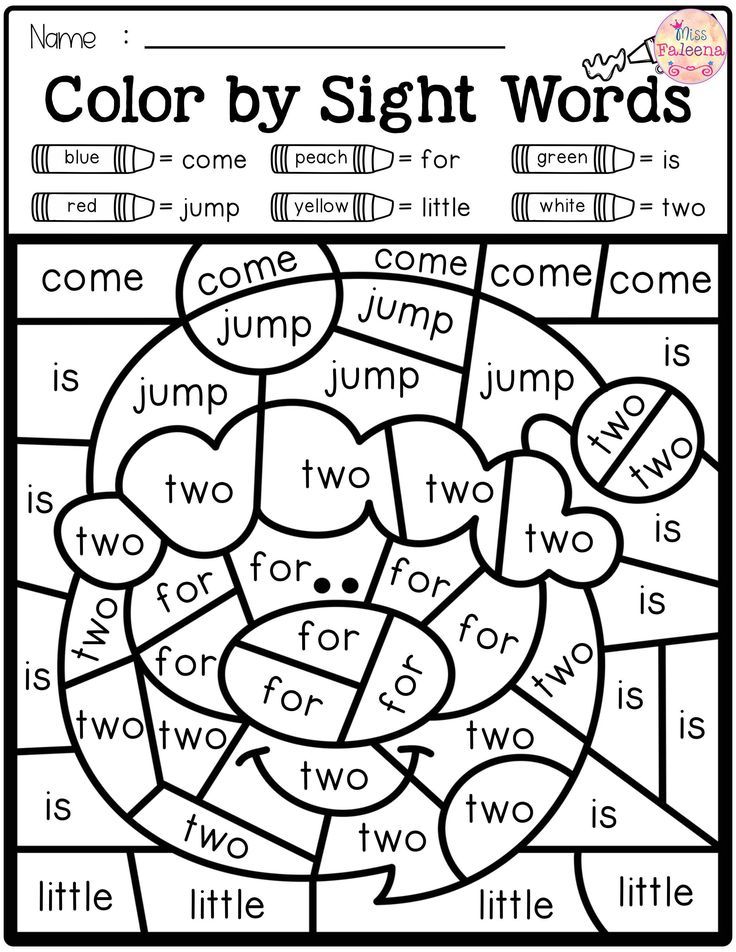
Learning is always more effective when it’s turned into a game! Here are some of our favorite sight word games and apps.
Sight Word Games- Go on a Word Hunt: Look for sight words in your Kindergartener’s favorite book! Count how many you can find. You could also print out a list of kindergarten sight words and put a checkmark next to each one you find.
- Sight Word Hopscotch: Draw a hopscotch board on the sidewalk with chalk and write different sight words in each square. As your child hops from square to square, have him call out the sight word he’s jumping to.
- Sight Word Water Balloon Smash: Fill water balloons and write sight words on each balloon in a permanent marker. On the sidewalk, write the sight words in chalk. Have your child choose a balloon, match it to the word on the sidewalk, and smash it on the chalked word. Not only is it a lot of fun, but it’s also a great way to stay cool.
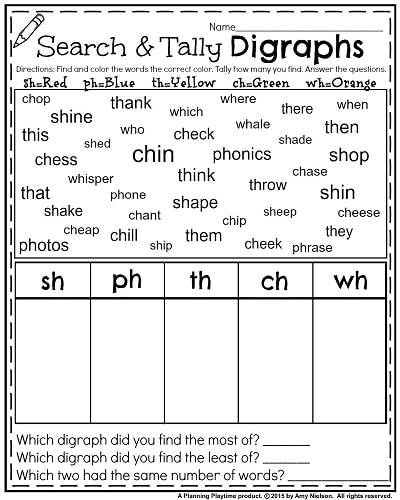
- There are more Games in this Kindergarten Sight Word Bundle Packet, like these puzzles, etc.
- Sight Words by Photo Touch – Free. This no-frills sight word app lets kids match the sight words and progress through the different levels.
- Sight Words List by Innovative Mobile Apps – $1.39. Bright and simple, this app lets you use pre-built lists of sight words or create your own. There are also challenges where kids can pick the sight word out of a group of words. The clear font makes the words easy to read.
- Sight Words: Kids Learn by Teacher Created Materials – Free. This sight words app features more frills than the two above. The pictures are colorful, the font is clear, and there are multiple games to help students practice their sight words.
- Print this FREE Kindergarten sight word list – Hang it by your door or on your refrigerator. Review the list daily until your child can read them fluently and confidently.
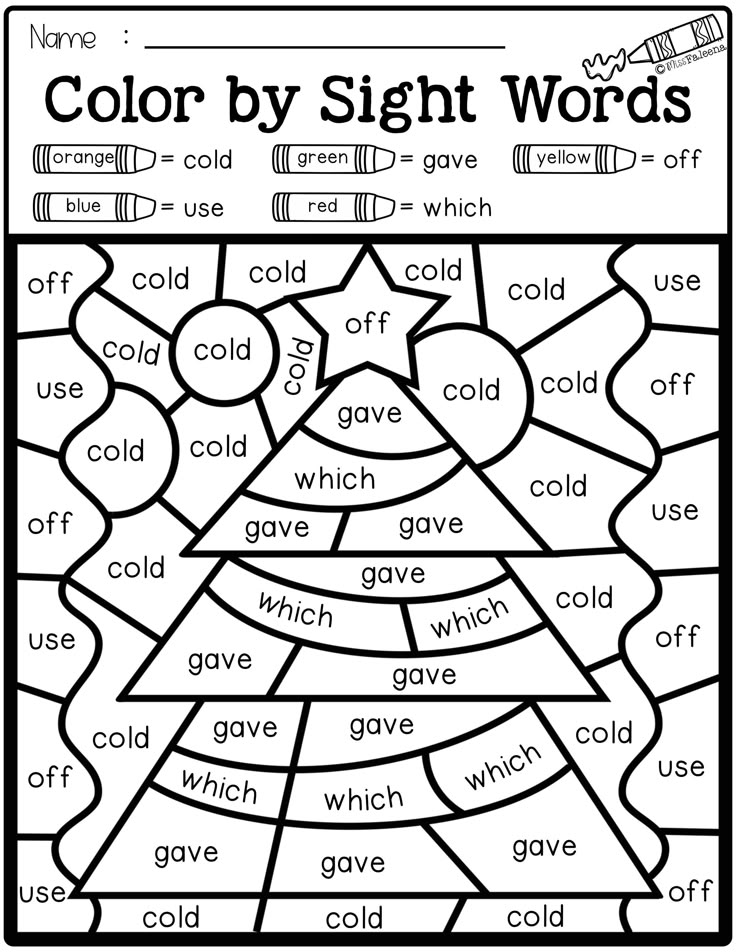
You’ll also want to think about helping them even more by using this Kindergarten Sight Word Bundle Packet.
This printable packet is easy to use; you can download it and print it over & over to help your child. The kids love it & they learn so much from the repetition of seeing the same words again & again. It’s a great way to help your child learn their sight words, which helps them to learn to read well.
See these other posts to get your child ready for school
- Teach kids their name and number with ONE tip
- How to read to your preschooler
- 5 practical, time-saving tips for school mornings
© YourModernFamily.com. Content and photographs are copyright protected. Sharing of this article is encouraged and appreciated, copying and/or pasting articles to any social media is strictly prohibited.
My first words: English words for children
How to raise a polyglot child? The answer is simple: start learning languages with him as early as possible.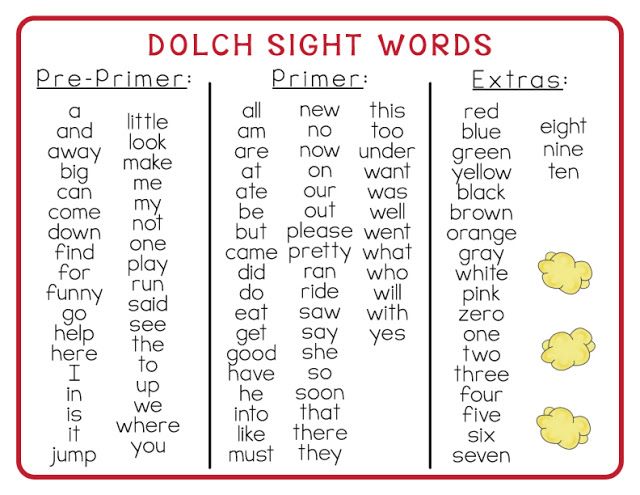 Basic English will be an excellent foundation for the future knowledge of the baby and will help develop learning skills, because the brain of children at an early age absorbs an almost endless amount of information like a sponge. The main thing is to present it correctly.
Basic English will be an excellent foundation for the future knowledge of the baby and will help develop learning skills, because the brain of children at an early age absorbs an almost endless amount of information like a sponge. The main thing is to present it correctly.
In this article you will find not only simple first English words for children, but also recommendations for learning them. Open to your kid the fascinating world of English!
At what age do we start teaching?
Opinions of experts and parents themselves about the age at which it is worth starting to learn English with a child differ. Of course, you can start singing lullabies to your baby in English even from infancy, but your strength will be almost wasted.
Most agree that the most optimal age from which the average child begins to adequately learn English as a foreign language is 2.5-3 years. It is believed that at this age the process of formation of native speech is already ending.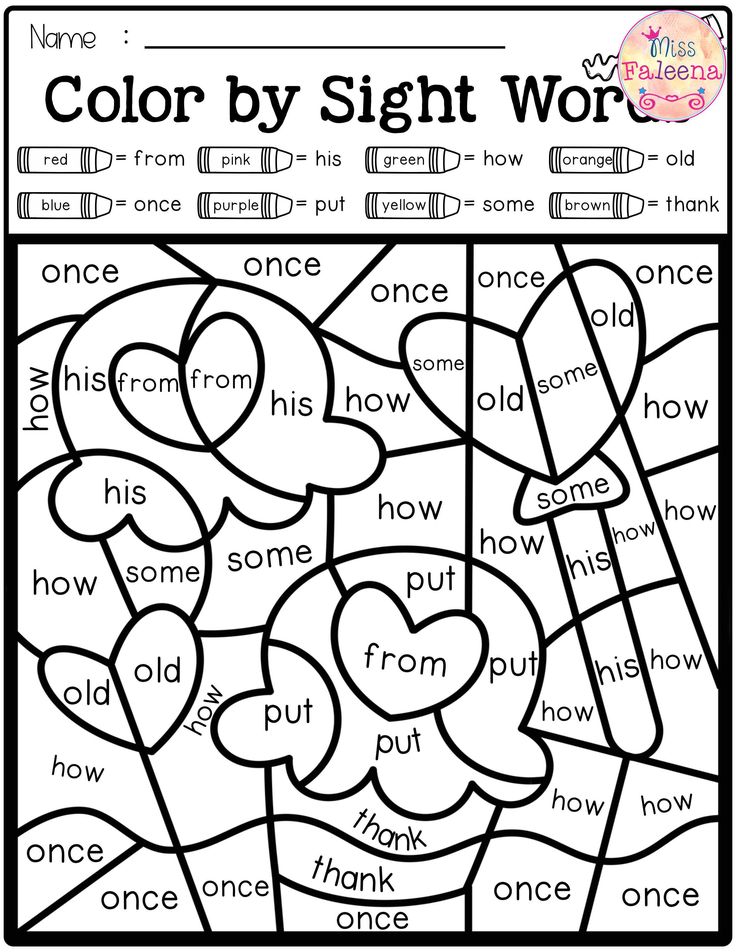 That is, the child must be able to clearly pronounce Russian sounds and words, as well as build sentences and have a coherent speech.
That is, the child must be able to clearly pronounce Russian sounds and words, as well as build sentences and have a coherent speech.
The exceptions here are when the child grows up in a multicultural environment. For example, if the mother is Russian and the father is English, then it is possible to communicate with the child in two languages from the very beginning. True, then your child will be funny to form sentences, and questions like: “Mom, can I have an apple” will constantly sound in the house.
This approach is good when the family lives abroad, where the main language is a foreign one. As the child gets older and starts attending kindergarten, the child will understand the difference between the languages of his parents and begin to use the words in the correct context. This applies, by the way, not only to English, but also to any foreign language.
If you want your child to speak only English from the very beginning, you can create an artificial multicultural environment.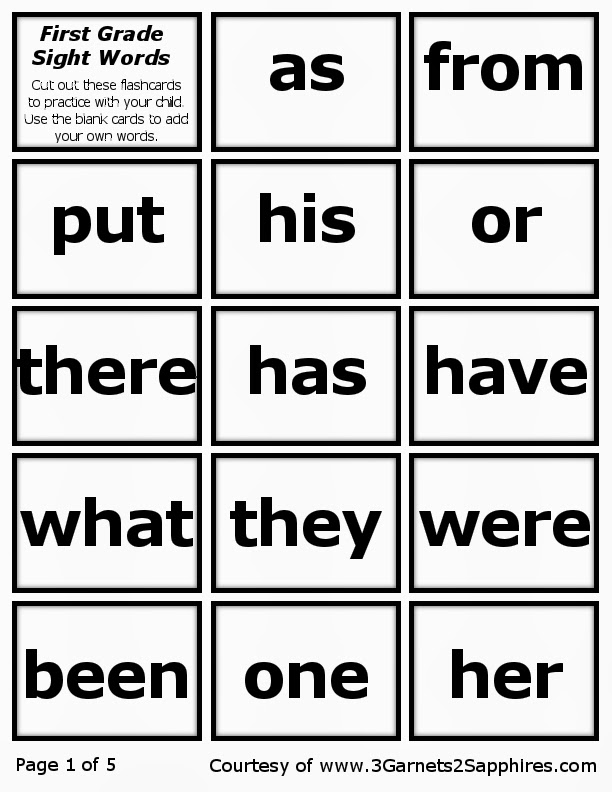 For example, at home talking with the baby only in a foreign language.
For example, at home talking with the baby only in a foreign language.
Is it possible to send a child to a language nursery or kindergarten with an English focus? Then do it without any hesitation. So the multicultural environment will be natural for the child: in the nursery they will communicate with him mainly in English, and at home you will be able to talk with the baby in Russian. In specialized language kindergartens, teachers will help your child learn English in a natural environment, and at home you can consolidate knowledge with him through various games and riddles.
If it is not possible to send your child to a language kindergarten, start learning English at home using the same methods that you used to learn your native language with him.
How to learn English with a child?
At a young age, of course, we are not talking about grammar or writing English words. To begin with, the child needs to learn how to pronounce sounds correctly, remember letters and form a basic vocabulary.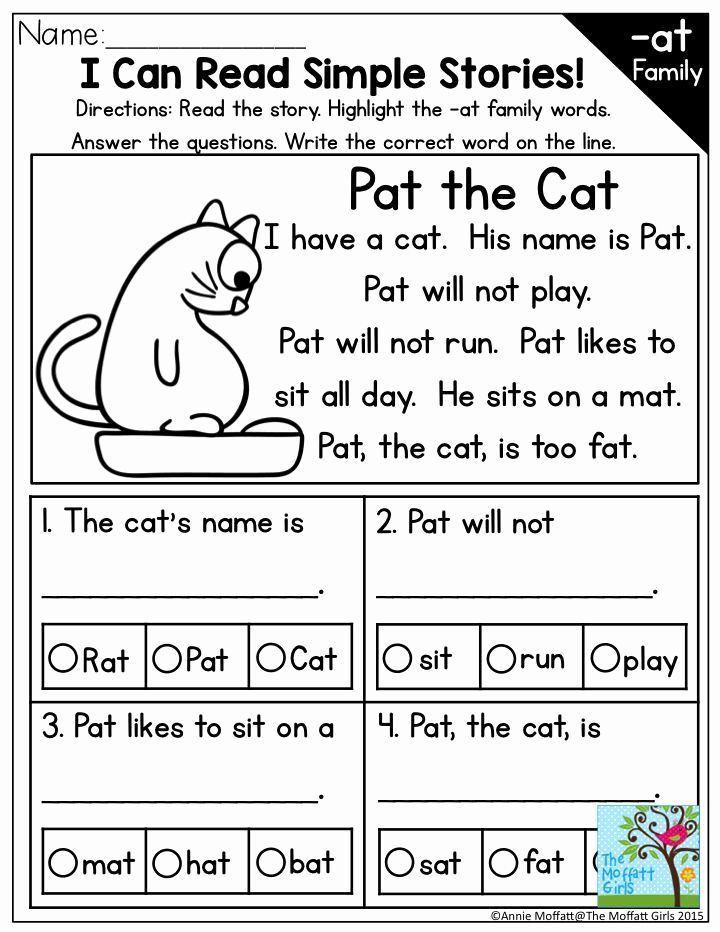 By the way, it will be much easier for a kid than for an adult to remember the correct pronunciation of English sounds, which are so different from Russian ones. They will not have to rebuild their articulation apparatus as much as we, adults, who have been speaking their native language for many years.
By the way, it will be much easier for a kid than for an adult to remember the correct pronunciation of English sounds, which are so different from Russian ones. They will not have to rebuild their articulation apparatus as much as we, adults, who have been speaking their native language for many years.
Here is a list of skills to develop in a preschooler first:
- listening to speech
- speaking
- reading
To make learning English not a burden for a child, add an element of play to the learning process.
Get a colorful glove doll and make it a kind of "teacher" for your child. Introduce your baby to a new toy and say that it only understands English, which means that in order to play with it, the child needs to learn an interesting new language. So this toy will become the main intermediary between you and your child in learning English.
First of all, learn the alphabet and the correct pronunciation of letters and basic sounds with your child.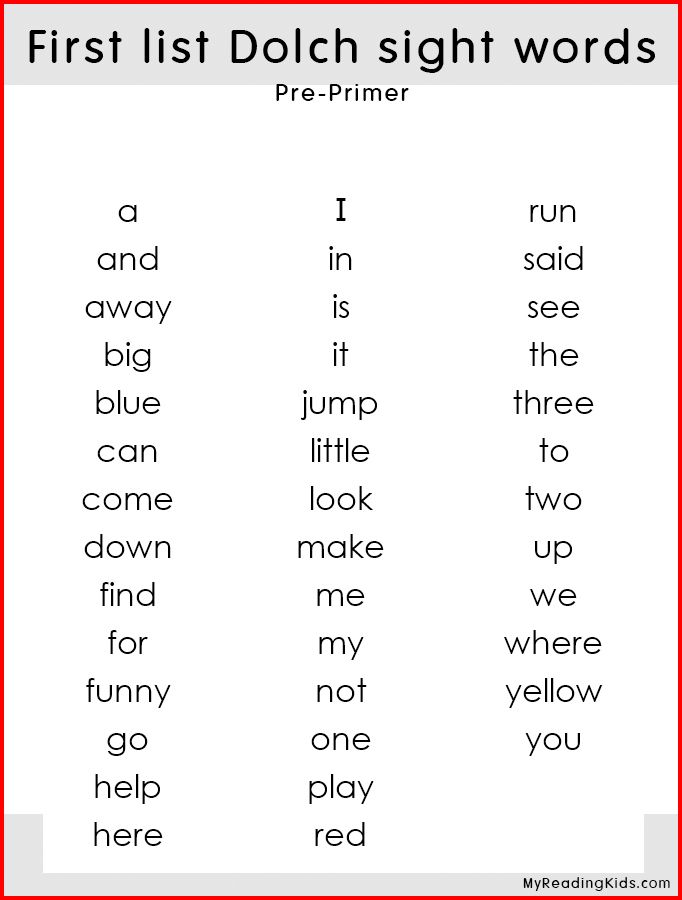 Make it better with the help of the popular ABC Song. This is how the English alphabet is taught all over the world, not only by foreigners, but also by native speakers themselves.
Make it better with the help of the popular ABC Song. This is how the English alphabet is taught all over the world, not only by foreigners, but also by native speakers themselves.
Next - form basic English for children: words and simple phrases. For example, make cards for basic words that the child already knows in their native language. These can be household items, animals, body parts, etc. It is better that the cards are bright, with the spelling of a word and a picture symbolizing a particular subject. You can stick these cards on household items so that the child constantly sees the names of objects in English and memorizes them automatically.
Incorporate English words into your regular vocabulary when communicating with your child. In the context of what is happening around the baby, it will be much easier to understand and learn the language. Playing at home or being outside, use the phrases and words you have already learned. If a child tells you: “Mom, look, a kitty!” Then answer: “Yes, it’s true, it’s a cat.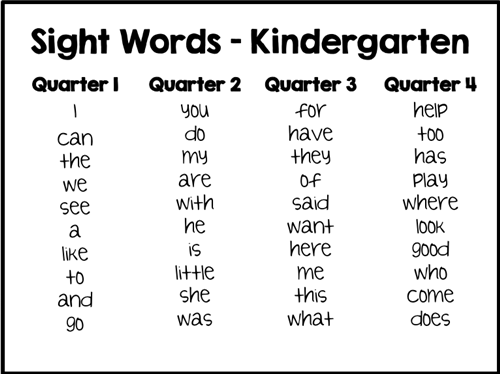 How would it be in English? A cat. This is a cat.
How would it be in English? A cat. This is a cat.
By the way, it's better to start learning not just individual words, but whole phrases at once, as in the example above. That is, to acquaint with the very, very basic grammar. After all, if you tell your child only words, he will only know the translation, and if you start using whole sentences, then he will memorize in sentences.
Visualization and variety are important for learning English with a child. Children may enjoy books in English with colorful pictures that can be read together at bedtime instead of the usual Russian fairy tales. Also, do not forget about special educational cartoons in English, where bright characters tell the child about the basics of the language or teach him the alphabet.
Play fun, educational games with your little one so they don't get bored while learning English. It can be cards, pantomimes, drawings and much more.
Basic set of words with transcription and translation
The first English words for children to start learning the language with are those that surround the child every day.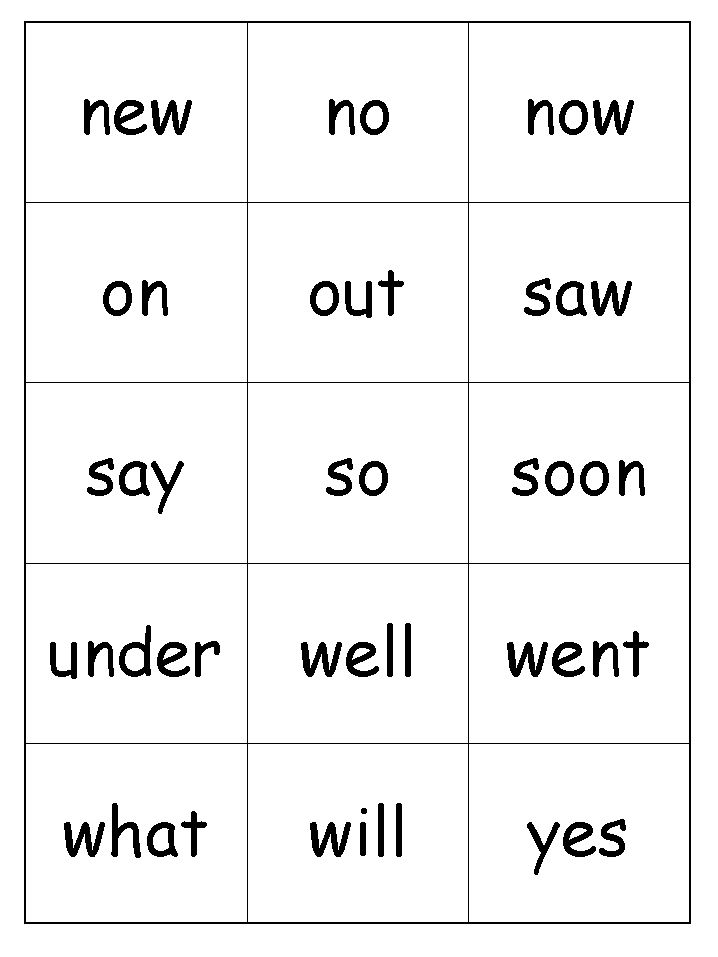 Below you will find a list of such words by topic.
Below you will find a list of such words by topic.
Family [ˈfæmɪli] - family
Mother [ˈmʌðə] - mother
Father [ˈfɑːðə] - father
Brother [ˈbrʌðə] - brother
Sister [ˈsɪstə] - sister
Grandmother [ˈgrænˌmʌðə] - grandmother
Grandfather [ˈgrændˌfɑːðə] - grandfather
Body [ ˈbɒdi ]
Head [head] - head
Hair [heə] - hair
Eyes [aɪz] - eyes
Nose [nəʊz] - nose
Teeth [tiːθ] - teeth
Lips [lɪps] - lips
Ears [ɪəz] - ears
Neck [nek] - neck
Shoulders [ˈʃəʊldəz] - shoulders
Leg [leg] - leg
Feet [fiːt] - feet
Pets [ pets ]
Dog [dɒg] - dog
Cat [kæt] - cat
Kitten [ˈkɪtn] - kitten
Puppy [ˈpʌpi] - puppy
Rabbit [ˈræbɪt] - rabbit
Parrot [ˈpærət] - parrot
Fish [fɪʃ] - fish
Hamster [ˈhæmstə] - hamster
Snake [sneɪk] - snake
Turtle [ˈtɜːtl] - turtle
Animals [ ˈænɪməlz ]
Goat [gəʊt] - goat
Pig [pɪg] - pig
Sheep [ʃiːp] - sheep
Horse [hɔːs] - horse
Cow [kaʊ] - cow
Goose [guːs] - goose
Chicken [ˈʧɪkɪn] - chicken
Duck [dʌk] - duck
Cockerel [ˈkɒkərəl] - cock
Fox [fɒks] - fox
Wolf [wʊlf] - wolf
Bear [beə] - bear
Hare [heə] - hare
Elephant [ˈelɪfənt] - elephant
Tiger [ˈtaɪgə] - tiger
Lion [ˈlaɪən] - lion
Crocodile [ˈkrɒkədaɪl] - crocodile
Giraffe [ʤɪˈrɑːf] - giraffe
Colors
Red [red]
Green [griːn] - green
Blue [bluː] - blue
Orange [ˈɒrɪnʤ] - orange
Yellow [ˈjeləʊ] - yellow
Pink [pɪŋk] - pink
Gray [greɪ] - gray
Black [blæk] - black
White [waɪt] - white
Purple [ˈpɜːpl] - purple
Brown [braʊn] - brown
Food
Water [ˈwɔːtə] - water
Tea [tiː] - tea
Juice [ʤuːs] - juice
Sugar [ˈʃʊgə] - sugar
Salt [sɒlt] - salt
Yogurt [ˈjɒgət] - yogurt
Bread [bred] - bread
Milk [mɪlk] - milk
Cheese [ʧiːz] - cheese
Eggs [egz] - eggs
Butter [ˈbʌtə] - oil
Meat [miːt] - meat
Cookies [ˈkʊkiz] - cookies
Chocolate [ˈʧɒkəlɪt] - chocolate
Fruits [ fruːts ]
Apple [ˈæpl] - apple
Pear [peər] - pear
Orange [ˈɒrɪnʤ] - orange
Banana [bəˈnɑːnə] - banana
Lemon [ˈlemən] - lemon
Pineapple [ˈpaɪnˌæpl] - pineapple
Grapes [greɪps] - grapes
Kiwi [ˈkiːwi:] - kiwi
Tangerine [tæn(d)ʒəˈriːn] — Mandarin
Melon [ˈmelən] - melon
Watermelon [ˈwɔːtəˌmelən] - watermelon
Peach [piːʧ] - peach
Vegetables
Carrot [ˈkærət] - carrot
Onion [ˈʌnjən] - bow
Garlic [ˈgɑːlɪk] - garlic
Tomato [təˈmɑːtəʊ] - tomato
Cabbage [ˈkæbɪʤ] - cabbage
Pepper [ˈpepər] - pepper
Potato [pəˈteɪtəʊ] - potato
Cucumber [ˈkjuːkʌmbə] - cucumber
House [haʊs]
Bedroom [ˈbedruːm] - bedroom
Living room [ˈlɪvɪŋ ruːm] - living room
Kitchen [ˈkɪʧɪn] - kitchen
Bathroom [ˈbɑːθruːm] - bathroom
Fridge [frɪʤ] - refrigerator
Cooker [ˈkʊkə] - plate
Table [ˈteɪbl] - table
Chair [ʧeə] - chair
Sofa [ˈsəʊfə] - sofa
Bed [bed] - bed
Window [ˈwɪndəʊ] - window
Mirror [ˈmɪrə] - mirror
Towel [ˈtaʊəl] - towel
Toothbrush [ˈtuːθbrʌʃ] - toothbrush
Toothpaste [ˈtuːθpeɪst] - toothpaste
Wardrobe [ˈwɔːdrəʊb] - wardrobe
Cup [kʌp] - mug
Plate [pleɪt] - plate
Bowl [bəʊl] - bowl
Fork [fɔːk] - fork
Spoon [spuːn] - spoon
Knife [naɪf] - knife
Clock [klɒk] - hours
Clothes [ kləʊðz ]
Dress [dres] - dress
Skirt [skɜːt] - skirt
Shirt [ʃɜːt] - shirt
T-shirt [ˈtiːʃɜːt] - T-shirt
Jeans [ʤiːnz] - jeans
Trousers [ˈtraʊzəz] - pants
Shorts [ʃɔːts] - shorts
Jumper [ˈʤʌmpə] - sweater
Suit [suːt] - suit
Coat [kəʊt] - coat
Hat [hæt] - hat
Socks [sɒks] - socks
Months [ mʌnθs ] - months
January [ˈʤænjʊəri] - January
February [ˈfebrʊəri] - February
March [mɑːʧ] - March
April [ˈeɪprəl] - April
May [meɪ] - May
June [ʤuːn] - June
July [ʤu(ː)ˈlaɪ] - July
August [ˈɔːgəst] - August
September [sepˈtɛmbər] - September
October [ɒkˈtəʊbə] - October
November [nəʊˈvembə] - November
December [dɪˈsembə] - December
Weather [ ˈweðə ]
Sun [sʌn] - sun
Rain [reɪn] - rain
Cloud [klaʊd] - cloud
Wind [wɪnd] - wind
Snow [snəʊ] - snow
Fog [fɒg] - fog
Cold [kəʊld] - cold
Hot [hɒt] - hot
Winter [ˈwɪntə] - winter
Spring [sprɪŋ] - spring
Summer [ˈsʌmər] - summer
Autumn [ˈɔːtəm] - autumn
This list of first English words for children is far from complete.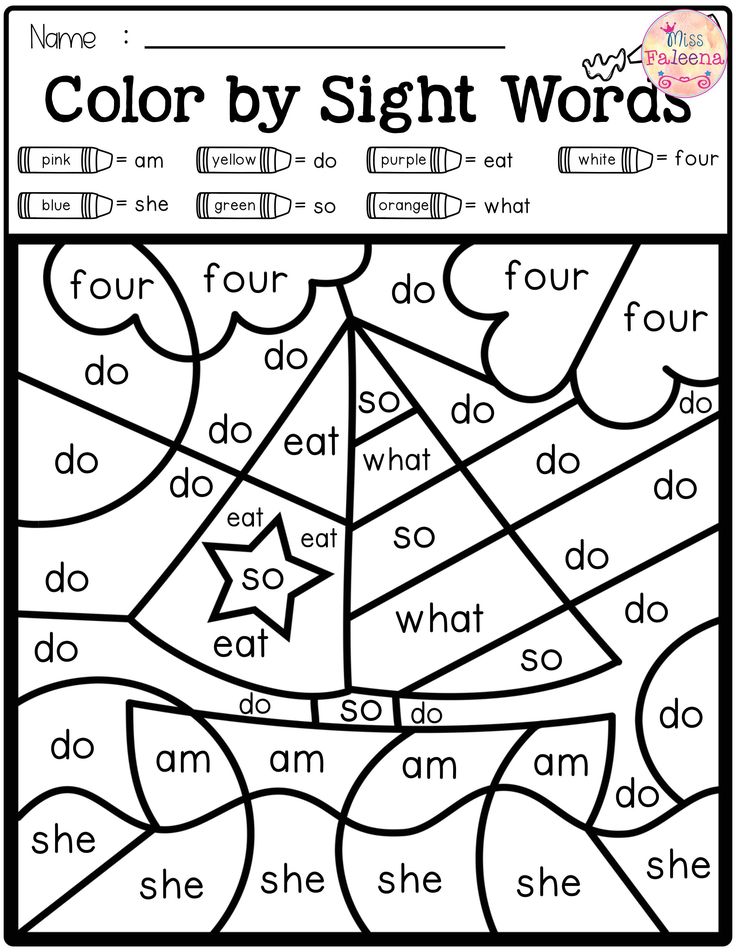 Include in it those words that the child encounters daily.
Include in it those words that the child encounters daily.
And most importantly, do not forget: in order to teach your child English from an early age, you need to be confident in your knowledge. You can check your level of English before you start learning the language with your child here.
English in kindergarten Alfavit, Nizhny Novgorod
English classes in kindergarten
A huge number of people speak English. English is an international language, it unites people from different countries. A lot of people want to learn English! As wise teachers say, “the sooner you start learning a foreign language, the faster you will learn it.”
Many parents try to teach their children unusual, but at the same time important words. Unfortunately, home schooling is not effective and does not provide the practice that all those who wish to learn English need to get.
Enroll your child in an English language circle in kindergarten , a lot of interesting things take place in an entertaining circle, regular classes in a team give an amazing effect.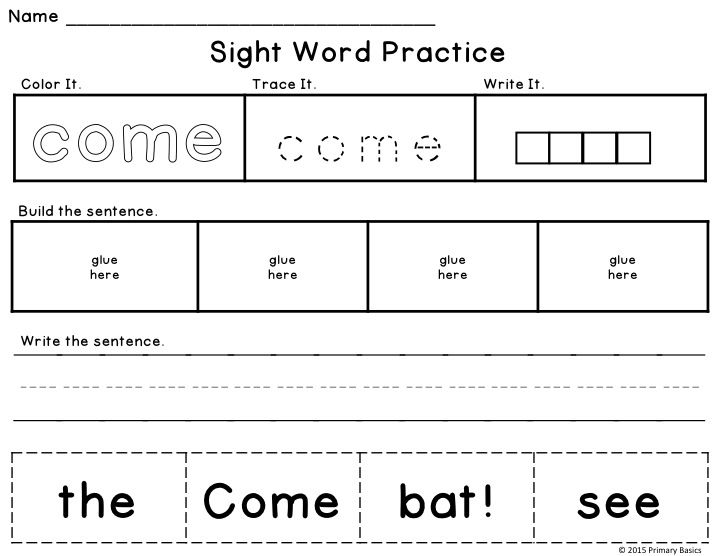 The child is able to quickly assimilate the material received! The kid already at an early age learns to build meaningful sentences in English!
The child is able to quickly assimilate the material received! The kid already at an early age learns to build meaningful sentences in English!
In kindergartens.
Entertaining work is carried out in kindergartens, aimed at learning a foreign language. Training takes place on fundamental topics: numbers, colors, animals. So, the student will be able to pronounce the name of the color in English (Yellow screams baby, it's yellow!).
The child will receive basic knowledge that will help in mastering the school curriculum. Children in noble families simultaneously studied several languages, by the age of 10 they could communicate in several languages. Children's learning is different from adults, since children do not need to study foreign words, for them the learning process comes naturally.
Learning a foreign language is a useful pastime: a student pronounces native words better, memorizes more material, it is easier to acquire new skills. All lessons are held in a playful way: teachers use poems, games, songs, impromptu performances while teaching writing and reading.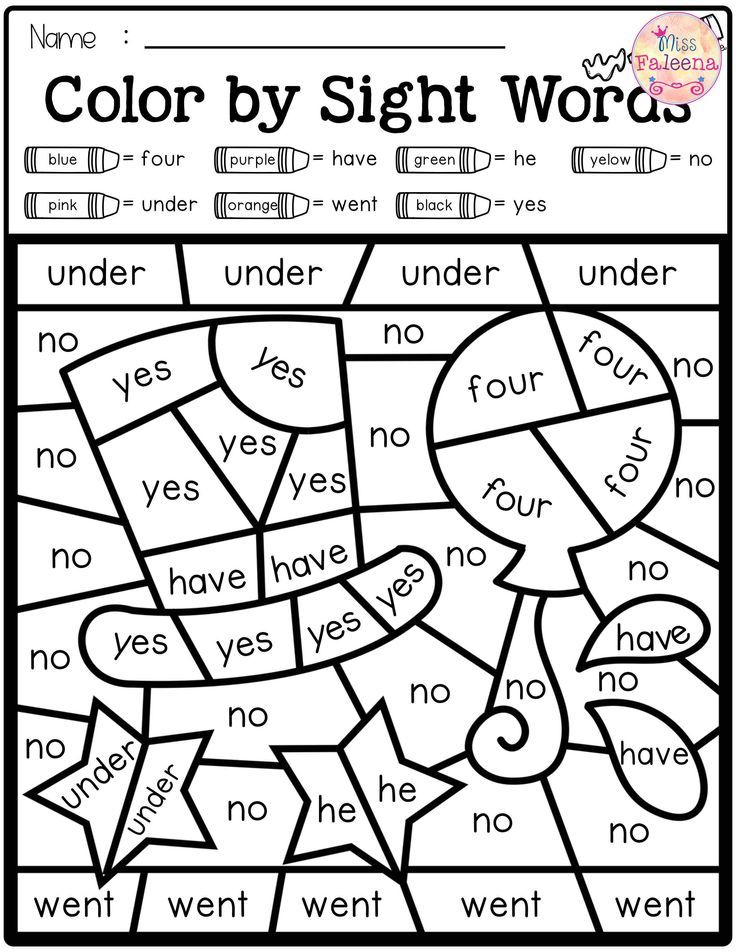 Intensive training is carried out with the guys, the result is noticeable after the first lesson! Children in the classroom learn to understand English speech, a separate part of the lesson is devoted to the correct pronunciation of foreign words. An exclusive lesson is held with each children's group, most of the lesson is devoted to working out the basic material, further school education is built on the basic platform.
Intensive training is carried out with the guys, the result is noticeable after the first lesson! Children in the classroom learn to understand English speech, a separate part of the lesson is devoted to the correct pronunciation of foreign words. An exclusive lesson is held with each children's group, most of the lesson is devoted to working out the basic material, further school education is built on the basic platform.
English words and sentences are presented in an interesting game package, thanks to which the child perceives learning as a kind of exciting adventure that one wants to get involved in. In the lessons, thinking and imagination develop: the student begins to think faster, this has a fruitful effect on further learning.
Each lesson lasts 50 minutes.
Dear parents, do you speak English well? Do you want your child to start learning English? Then pay attention to private kindergarten in Nizhny Novgorod , in this kindergarten they study English words: your child will begin to understand English speech.